Communication planning
APM People Specific Interest Group August 2020
Foreword
Communication has long been recognised as a key success factor for all those involved in project-based work. “Communication is fundamental to the P3 environment. Poor communication can lead to misunderstood requirements, unclear goals, alienation of stakeholders, ineffective plans and many other factors that will cause a project, programme or portfolio to fail.”1
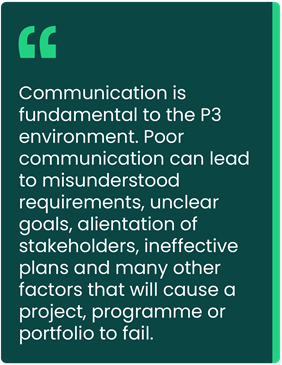 There are many existing publications and sources of information about communication as a general management or business skill. Is another document needed? The complications and complexities of projects and programmes can create particular communication challenges. With this guide, the authors have focused specifically on communication for project-based work, and the needs of project professionals. Ann and Tim have many years’ experience in project and programme management and also in the science and practice of communications and stakeholder engagement. In writing this guide, they have managed to distil their knowledge and insights into the core essentials for effective project communication. The result is a concise and accessible document. The first section leads through a simple process of creating a plan, before going on in part two to consider the different factors that make communication work – the psychology and nuances that can influence whether the right people get the right message at the right time. Finally, the last section recognises that communication is a shared responsibility. Achieving positive results depends on enabling others just as much as your own abilities.
There are many existing publications and sources of information about communication as a general management or business skill. Is another document needed? The complications and complexities of projects and programmes can create particular communication challenges. With this guide, the authors have focused specifically on communication for project-based work, and the needs of project professionals. Ann and Tim have many years’ experience in project and programme management and also in the science and practice of communications and stakeholder engagement. In writing this guide, they have managed to distil their knowledge and insights into the core essentials for effective project communication. The result is a concise and accessible document. The first section leads through a simple process of creating a plan, before going on in part two to consider the different factors that make communication work – the psychology and nuances that can influence whether the right people get the right message at the right time. Finally, the last section recognises that communication is a shared responsibility. Achieving positive results depends on enabling others just as much as your own abilities.
The authors are active volunteers within APM. On behalf of People SIG, I would like to thank them both for giving their time and knowledge to produce this document to support the project community. I hope that APM members find it as informative and valuable as I do.
 |
Fran Bodley-Scott, Chair, People SIG, April 2020
About this guide
Welcome to this APM People Specific Interest Group (SIG) guide to communication planning and implementation.
Successful communication is critical in virtually every aspect of project, programme and portfolio management. The People SIG team believes firmly that it can make the difference to realising the benefits of a project. The guide has been designed to provide a simple framework that can be used by project managers and communicators supporting projects. The models here encourage a listening approach, attention to diversity and the design of communication to best meet the needs of stakeholders and the project.
 |
About the authors
 Ann Pilkington
Ann Pilkington
Ann is the co-founder of PR Academy which was established in 2007 to provide professional qualifications for communicators. She leads courses in internal communication and change management.
She has worked on large business change programmes across government and is qualified in project management to PMQ level. She is the author of Communicating Projects published by Routledge. She has also authored a chapter on project management in the 4th edition of Exploring Internal Communication, edited by Dr Kevin Ruck and the Practitioner’s Handbook of Project Performance (both by Routledge).
 Tim Lyons
Tim Lyons
Tim is a programme and project manager who has worked in the project environment for many years. He is a qualified INLPTA master coach and ICC international coach and writes on subjects where coaching, people and projects intersect. He is an APM Fellow and holds a master’s degree in Coaching and NLP.
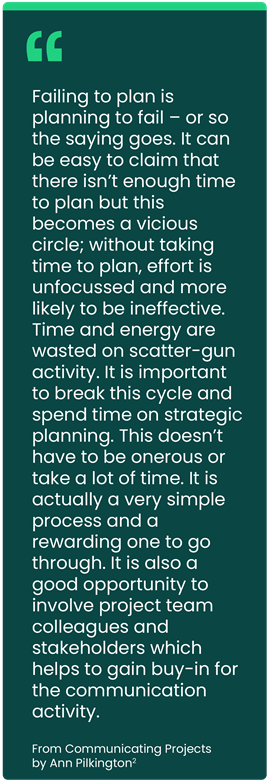 Introduction - What is a communication strategy?
Introduction - What is a communication strategy?
A strategy sets out the thinking that informs a project or programme’s communication. It can be thought of a bit like a business case in that it sets out the rationale for a particular approach, with a budget. It is a written description of a strategic planning process that has taken place. A communication strategy differs from a plan. A plan is a collection of tactics with timings that are designed to deliver the strategy. It may sit as an appendix to the strategy document. A plan that simply pulls together a number of tactics without a strategy behind them isn’t strategic and is really just a calendar.
Planning models
There are many communication planning models. The organisation of which your project is a part may have its own approach, so that is a good starting point, otherwise most planning models usually follow the same pattern:
 |
More sophisticated models acknowledged that feedback is an ongoing process and Ruck’s RADAR model4 highlights the need to consider communication theory as part of the strategic planning process:
It sets out five key stages:
 |
The components of a communication strategy document
A typical communication strategy will include the following:
⯀ Housekeeping. Including version control, sign off protocols. Explain how often it will be reviewed. Regular reviews and updates are vital.
⯀ Scope. What the strategy covers and what it doesn’t, including timescales
⯀ Background research. What do we already know about the situation and stakeholder attitudes?
⯀ Objectives. Set SMART, outcome objectives for the project communication
⯀ Stakeholders. Who do you want to engage and how will you segment and prioritise them?
⯀ Messages and narrative. What you want to say, the story and key messages.
⯀ Channels. What channels you will use including a strategy for each channel.
⯀ Evaluation. How you will measure the objectives.
For a more detailed example, see Appendix one.
Housekeeping, version control and sign off protocols
This section is where you can include version control. This will probably be done in line with any processes already in place on the project. It may include at what interval it will be reviewed – for example, at relevant stages of the project life cycle.
An important step that is often missed is a sign off protocol. It can sit here or under its own heading. This simply means who is going to approve communication messages, materials etc and to what timescales. It will apply to the strategy and plan itself too, including any updates. This is really important as constant circulation of drafts and redrafts can mean missed deadlines and impact on the quality of communication.
Scope
For project managers this needs no introduction! This simply explains what the communication strategy covers, and what it doesn’t. This can include timescales. For example, does the strategy run up to a certain point in the project life cycle?
Background research
All communication activity should be anchored in research. What do we know about the situation? What do our stakeholders think or feel?
A lot of this can be achieved through desk research but if none is available then primary research can be carried out and use to inform the communication objectives.
KEY TERMS EXPLAINED: RESEARCH FOR COMMUNICATION
Desk research – data from documents such as annual reports or a business case
Secondary research – using existing data and re-analysing it for a new purpose
Quantitative methodology – data that is numerical and/or can be analysed using statistics or other mathematical models
Qualitative methodology – open-ended responses, detailed opinions, narrative observations, thematic interpretation
Mixed methodology – combination of quantitative and qualitative data and/or analytical approaches
Objectives
Every communication strategy should include SMART objectives that are about outcomes – not just outputs. An outcome means what you want people to do as a result of your communication activity, rather than what you are going to do.
KEY TERMS EXPLAINED: SMART OBJECTIVES
Specific
Measurable
Achievable
Relevant
Timed
SMART objectives should also be:
⯀ Communication related. Don’t set an objective for something that communication can’t deliver.
⯀ Singular. An objective that covers more than one thing can’t be measured accurately.
⯀ About outcomes. What do you want people to think, feel or do?
⯀ Stakeholder specific. You may want different objectives for different stakeholder groups.
It can be necessary to set output objectives too – for example, how many newsletters will be issued, but something like a newsletter is really a means to an end – it is being produced to bring about an outcome.
Be wary of objectives around engagement based on clicks, likes and shares. This knowledge is useful and can be thought about as a KPI because they contribute to towards achieving an outcome objective, but in themselves they don’t tell you very much. Someone may click or share but it doesn’t mean that they understood the message or agreed with it.
DID YOU KNOW?
Neurolinguistic Programming (NLP) additionally suggests that outcomes should always be stated in the positive. For example, an objective about a business change can be worded along the lines of people understanding the news ways of working, rather than being about people stopping working to the old system.
For more on NLP, see the next section.
Stakeholders
Who does the project need to engage with? Identify your stakeholders in as much granularity as possible. For example, never talk about “the general public” – there is no such thing. Or “all employees” or “the board”. Even within a board of directors there will be different levels of interest and influence.
Diversity: It is at this stage of the planning that diversity should also be considered. Again, a weakness of the traditional power/interest matrix is that it is not designed with this in mind. So, at this stage of your planning process think about the different communication needs and cultural differences of your stakeholders and draw up your communication strategy accordingly.
Once stakeholders have been identified they can be prioritised. This might be using the power/interest matrix. However, the matrix can be problematic in an age where power and influence can sit with a wide range of stakeholders – not just those in positions perceived as powerful. Social media gives many more stakeholders a powerful voice. The traditional matrix suggests that those with high interest but perceived low power do not always need to be considered as important, but if fact these groups and individuals may have special interests which need to be considered.
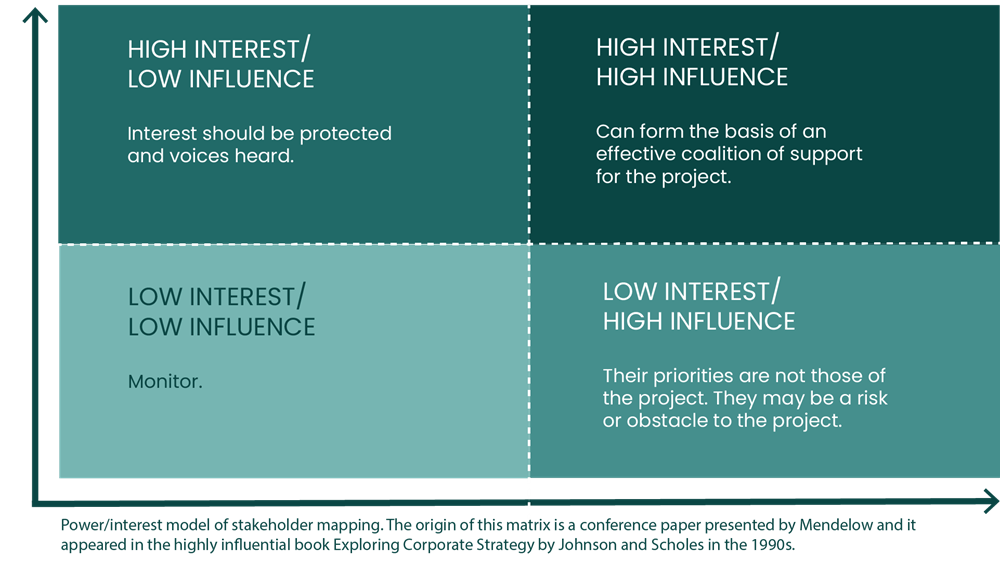 |
KEY TERMS EXPLAINED: STAKEHOLDERS
Stakeholders are: Individuals or groups who have an interest or role in the project, programme or portfolio, or are impacted by it.
APM Body of Knowledge 7th edition.
What’s next? Preparing the plan
Now that objectives have been set and stakeholders identified, the communication plan can be put together.
Think of this process like a golden thread that runs through everything – the tactics in your plan should be designed to deliver your objectives and be right for your stakeholders.
 |
LEARN MORE
The APM website has lots of resources to support working with stakeholders.
Messages or narrative
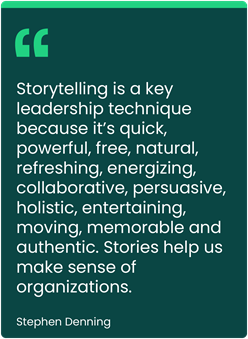 What are you going to say?
What are you going to say?
Sometimes this may be as simple as a set of key messages listed in bullet points, or you can set out a narrative using storytelling.
Organisational storytelling is a powerful vehicle for constructing meaning that relies on conventions of plot and characterization, combined with the narrative skill of the storyteller, to entertain, persuade, and win over.
On projects, as with any communication campaign, it’s important that everyone knows and understands what the project wants to say so that messaging is consistent. If something changes, let everyone know.
You may want to say different things to different stakeholders depending on their role in the project or concerns that they may have.
Again, think about diversity. Messages that resonate with one stakeholder group may not with another. Make sure what you say and how you say it is culturally appropriate and takes into consideration different communication preferences (more about this in Part 2).
Channels
Channels are the methods by which we talk to our stakeholders. The selection of channels should be driven by the impact of the change and what stakeholders prefer. The higher the impact, the richer the media should be. Lean channels are suitable for lower impact change.
Remember: “the medium is the message”. This simply means that the way a message is communicated becomes part of the message. It is important that channels are trusted by stakeholders – if the channel is seen as propaganda for example, the content will be too. Of course, it is also important to make sure the channels work for stakeholders – electronic “pull” channels may not work if the change is complex and stakeholders don’t have easy access to a device. Traditional face-to-face dialogue might work best.
The nature of the channel will also vary through the life of a project. At the start while things are in development, richer channels such as face-to-face may be appropriate. As implementation approaches and the task is to explain to people what they need to do and when, one-way “push” channels may be best.
Every communication strategy should include a channel strategy which explains what type of content each channel is for. Consistency helps stakeholders to navigate their way through the communications.
KEY TERMS EXPLAINED: CHANNELS
Push and pull – channels may push content at stakeholders or rely on them pulling the content that they want. Email is an example of a push channel. Posts on social media are more pull because people may or may not see it according to how they engage with that channel.
Rich media – enables people to interpret and reach agreement about difficult and complex issues. Richness is also determined by the ability to offer rapid feedback, multiple cues, natural language, and personal focus. An example would be face-to-face workshops.
Learn media – Appropriate for communicating about routine activities. For example a poster campaign.
Not to be confused with Convincer channels, as described in Part 2.
Measurement and evaluation
All communication activity should be designed to deliver SMART objectives and should, therefore, be measurable.
It makes sense to check how activity is going – you don’t want to wait until it’s all over to find out it didn’t work! Pick the type of research that is most appropriate for the task. An online quantitative survey is good for checking if people have received something, but to find out if they understood it and intend to act on it, qualitative research such as focus group may be best.
This activity should be fed into project lessons learned to help with future project communication.
Honesty matters here, if some research mid-way through a campaign shows that it isn’t having the desired impact, this should be recognised and the campaign re-thought. It is important to encourage an atmosphere where reporting that things aren’t going as well as hoped is seen as a strength and good practice, not a sign of failure.
Useful links and resources
APM Body of Knowledge – Communication
APM resources for stakeholder engagement
UK Government Evaluation Framework planning model 2.0
Communicating Projects by Ann Pilkington
PR Academy’s PR Place Guide to Writing a Communication Strategy
Now you have a strategy and a plan, how can you ensure that the way you communicate will be effective?
Introducing communication
Communication doesn’t just happen, it’s a highly complex set of layers, rules and parts. It generally starts with one individual and ends with one of more other individuals (not limited to humans). A commonly held view of the mechanics of language, developed by Noam Chomsky6 and others in the 1970s suggested there is a Universal Grammar7 that is innate in humans, in other words a ‘Deep Structure’ that we all have, and that this is translated into a ‘surface structure’ – which is what we might call common language. It is through language that we construct our world view.
The work of Chomsky and other linguists of the era was taken forward in a set of disciplines and research that nowadays is collectively known as Neurolinguistic Programming (NLP) and generally this works across all cultures. A central tenet of NLP is that the value of a communication is the meaning received. Relevant bits of the discoveries and research of this branch of science are summarised here, with particularly emphasis on ensuring that a communication’s meaning really hits the spot.
Let’s consider some of the more basic language patterns that we all use, an understanding of which will help to communicate better.
Primary representational systems [“the map is not the territory”8]
We all construct our world view through patterns that describe how we experience it. For reasons that are not totally clear, but are demonstrable, there are three primary systems of representing our experience. All of us have a preferred (default) system but often use the others depending on context. They are:
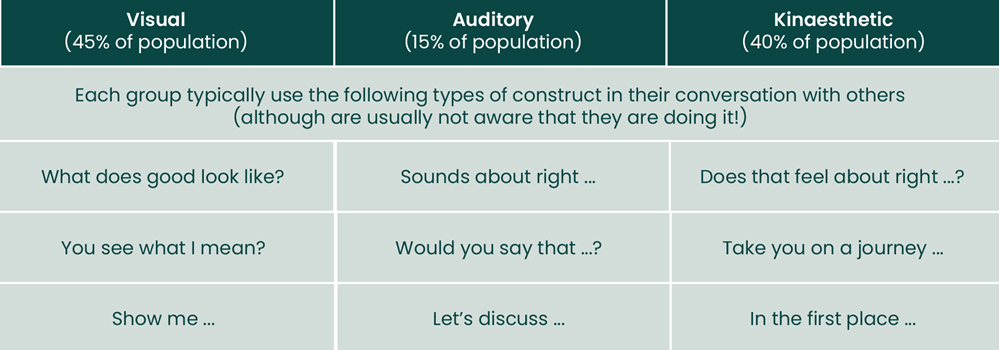 |
Communication is more effective when the primary representational systems between the person transmitting and the person receiving match. Conversely, when it mismatches, communication is less likely to work as well. It is not always possible to change this on the fly.
HOW TO USE THIS IN PRACTICE:
Observe the patterns people are using (whether written or spoken) and try to respond in the same representational system – the chances are the interaction will work better. For example, if you think they may be visual, use terms such as: “What does good look like?”.
Convincing: how we come to believe things, or make others believe them9
What type of information does a person need to gather in order to be convinced of something? There is evidence that the things that make us believe something are acquired through specific channels:
⯀ See: 55% of us are convinced when we see the evidence ‘with our own eyes’ – beware fake news etc
⯀ Hear: 30% of us will be more convinced when we hear something told by others
⯀ Read: only 3% of us will be totally convinced by reading something written down
⯀ Do: 12% of us are only really convinced when we do it ourselves – ‘walk the talk’
Convincer mode
How does a person treat information gathered in order to become convinced? Whatever convincer channels we favour have to impact on us enough to make the convincing complete:
⯀ Number of examples: 52% of us are convinced more when we see something repeated – and this has a subcategory regarding the number of repeats that do it for us!
⯀ Automatic: 8% of us just ‘get it’ without a need for further impact
⯀ Consistency: 15% of us are convinced by evidence that supports itself in a consistent way
⯀ Period of time: 25% of us come to be convinced by the passage of time
HOW TO USE THIS IN PRACTICE:
If you believe your audience will just take things on trust then just communicate; if you think you need to demonstrate, then do that; if you think they will ‘get it’ by doing it themselves, then get them to do that – say three times; if you need to show supporting evidence then collect that in advance. The simplest way to build this in is to use a mix of convincers in the expectation that an audience will be made up of a mix of channels/modes and so incorporate different methods to reach as many people as possible. Respond to what works best.
A central belief of NLP and other theories of how we work describes our existence as having successively higher levels of refinement. Similar in structure to Maslow’s Hierarchy of Needs10, the system of Neurogical Levels described by Gregory Bateson and developed later by Robert Dilts suggests the following levels (sometimes called the Logical Levels of Change11). It describes the levels that we operate at in our daily lives:
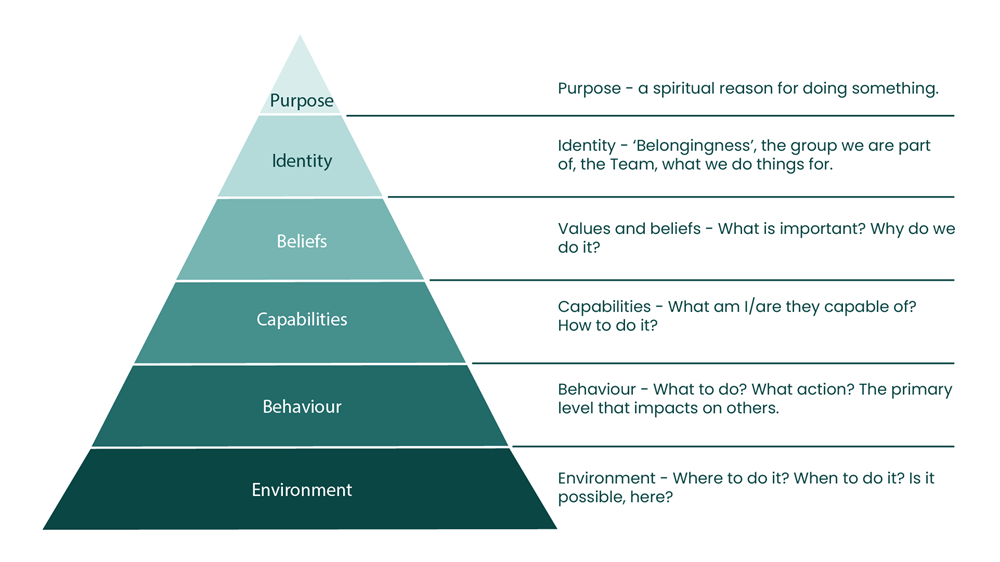 |
This model works both at individual level but can be applied at team or organisational level to good effect. The central theory holds that the higher up the levels you go, the more powerful the effect. Some are easier to change – you can change the environment: the tools, place and timings of a project relatively easily; it’s harder to get people to understand the value of double-checking things, or that the team really can hit its deadlines; harder still to convince people they are part of something bigger and more important than they are as individuals.
Applying the Logical Levels model can bring about change quickly and powerfully if done well (if done crudely or without authenticity it can have the reverse effect!).
HOW TO USE THIS IN PRACTICE:
If you want to bring people together in a common purpose, then appeal to them at the Identity level, and stress the values we want to enshrine. Behaviours will only follow when the higher levels are in line i.e. It’s not going to work telling people to change their behaviours unless they feel part of some group that does not behave like that. ‘Chunking up’ gets you to higher level drivers as in “What’s important about x?” and ‘chunking down’ lets you understand lower level preventers, as in “What stops you from y?”.
Metaprogrammes
We are all operating filters and mental ‘programmes’ when we think and communicate, although below the level of consciousness. Typically, these are a set of continuums between polar opposites, the commonly used categories being shown below:
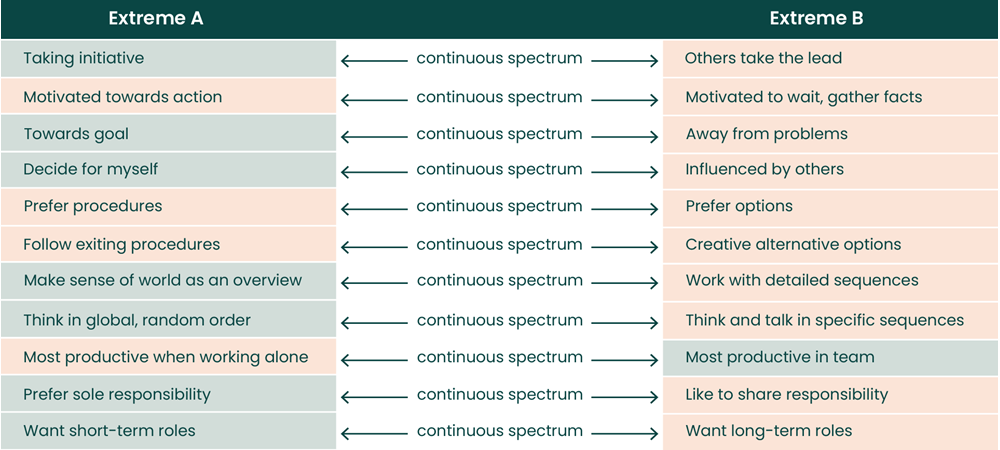 |
Most people’s thinking and behavioural preferences for each category lie along a spectrum between the two extremes. For example, we often speak of someone as ‘a details person’ or a ‘big picture person’. In saying that, we are simply observing the seventh metaprogramme in the table above and making a judgement about where we think a person lies on that spectrum.
It is normal to find a standard distribution pattern across the spectrum, with maxima approximately near the centre, however a note of caution: while the metaprogramme spectrum is fairly constant among different cultures or groupings, we may find differences in where these maxima lie.
The author’s own research12 into the decision-making characteristics of a group of western project managers of both genders suggested preferences tending towards the blue extremes highlighted in the table.
HOW TO USE THIS IN PRACTICE:
Bear in mind that the highlighted parts of the table above are a very rough guide to a cross-section of project professionals’ metaprogramme preferences (and strongly caveated as a generalisation), however, as always, listen out for cues and then respond using the patterns you are hearing and seeing. Bringing out those particular options in project communications might help the message ‘hit the spot’.
Verbal and non-verbal
Written only communication (emails, reports) lack a verbal component. The Association for Project Management Body of Knowledge 7th edition touches on this in section 3.3.1 Communication. Psychology researcher Albert Mehrabian’s 1967 proposal13 has suggested a formula that guides conversational meaning received (when an emotion is involved):
 |
Although this theory is now considered too simplistic, a broader and more general interpretation would be that congruence between all three will be more likely to convey the meaning intended. Rehearsing a speech in front of a mirror can help!
HOW TO USE THIS IN PRACTICE:
When speaking on an issue that involves values or beliefs for example, if the emotion in the words you’re saying doesn’t line up with the emotion in your tone of voice or facial expression, your listener will probably believe the latter.
First and second (and third) perceptual position
There are three basic perceptual positions we use when communicating14. These refer to whose ‘voice’ or point of view we are taking on. The three classic perceptual positions are:
1. FIRST POSITION – ‘ME, MYSELF, I’ This is what I want to say; my own message; what I want to get across to you; a broadcast. Using this position is normally necessary in communication – why else would anyone do it unless they had something to say? However, if you use only the first position, there is a danger you will lose your audience, or you may be perceived as single minded, arrogant, opinionated, unsympathetic.
2. SECOND POSITION – ‘WALKING IN SOMEONE’S SHOES’ This position takes account of what the other might be experiencing. Using this voice demonstrates you are mindful of your audience’s needs, feelings, beliefs, where they come from. Using first and second together mixes it up in a way that gives the impression of a more complete communication, it demonstrates empathy.
3. THIRD POSITION – ‘FLY ON THE WALL’ Third position is more reflective that the other two and can be used to take a more rounded view and can take the sting out of the heat generated by two entrenched positions; Third Position does a ‘time-out’ and asks ‘What would someone else understand about this interchange’?
HOW TO USE THIS IN PRACTICE:
Perceptual positions are used a great deal in coaching, where there is personal interaction. They can be used to good effect when designing a communication plan or making a presentation. Saying something like: ‘You might well ask…’ or asking for audience responses demonstrates good use of second position. Taking a neutral stance on a polarised subject, citing 3rd party research or offering a reflective view would be to use the third position.
Listening
Many of the techniques noted above cannot happen without the skills of listening, and this is covered elsewhere. A communication process that does not involve some element of listening is essentially a broadcast; while this may be what is needed in some circumstances (e.g. orders, commands, safety-critical communications), it is not a twoway transaction.
Active listening is a key part of communication, and this should never be underestimated. Good listening is done with for purpose of understanding; however, most people do not listen with the intent to understand; they listen with the intent to reply.15
Useful links and resources
Richard Bandler and John Grinder, co-founders of NLP
Sleight of Mouth: The Magic of Conversational Belief Change by Robert Dilts
Who’s Listening? Research into organisational listening
PR Academy PR Place Guide to using communication theory
It is often not enough to employ a communication lead and leave them to get on with it. There are things they will need from the project and as a project manager, there are things that you should expect from them.
The following are some tips for an effective relationship and positive results:
⯀ Communication needs to be involved from the start. The project needs to be on the “front foot” with stakeholders and ensure that they are being listened to. Bringing communication in too late makes it hard to get things back on track and the project may never recover fully.
⯀ Communication is a specialist area of practice. Make sure you seek the advice of your communication lead – don’t tell them what to do, tell them what you want to achieve.
⯀ Make setting the SMART communication objectives a collaborative exercise, ensure everyone has bought into them and they are the right ones for your project. Ensure that they are relevant, measurable and most important of all focussed on outcomes not outputs (see the section on objectives in part one). Having an objective to deliver a number of events or quantity of briefings is useful, but you need to know that they have achieved the outcome you need to help your project succeed.
⯀ Give time to communication on your board or steering group meeting agenda. For every item ask about the implications for communication. Of course, communication should also be a standalone item where you receive an update on progress but avoid it always being the last item on the agenda, it always gets rushed when this is the case. Expect your communication lead to come to the meeting with an update against the agreed objectives at the appropriate time.
⯀ Communication is two-way which means listening to stakeholder feedback but also being prepared to act on it where possible. Look to your communication lead to plan and facilitate this dialogue.
Communication strategy template
|
Introduction and background |
|
Scope |
|
Roles and responsibilities |
|
Stakeholders |
|
Aims and communication objectives |
|
Strategic approach |
|
Key messages and narrative |
|
Channels |
|
Media and external relations |
|
Risks and dependencies |
|
Resources and budget |
|
Sign-off protocols |
|
Evaluation |
|
Reporting |
1 Association for Project Management: Golden rules of project management
2 Pilkington, A. Communicating Projects, 2015
3 Gregory, A. Effective Planning for Public Relations, 2010
4 Ruck, K. Exploring Internal Communication, 4th edition, 2020
5 Bell, E. and Leonard, P. 2016. Digital Organizational Storytelling on YouTube: Constructing Plausibility Through Network Protocols of Amateurism, Affinity, and Authenticity. Journal of Management Inquiry 1 –13.
7 Chomsky: Studies on Semantics in Generative Grammar, The Hague: Mouton, 1972.
8 Korzybski A. Science & Sanity, 1933
9 Charvet S. R. Words That Change Minds, 1997
10 Maslow, A. 1943, A Theory of Human Motivation, Psychological Review
11 Dilts, R. From Coach to Awakener, 2003
12 Lyons T. “The decision-making strategies of project managers” University of Kington MA research, 2009
13 Mehrabian, Albert; Wiener, Morton (1967). “Decoding of Inconsistent Communications”; Mehrabian, Albert; Ferris, Susan R. (1967). “Inference of Attitudes from Nonverbal Communication in Two Channels”.
14 Andreas C and Andreas T, Aligning Perceptual Positions – A New Distinction in NLP, 1991
15 Steven Covey: “The 7 habits of highly effective people” 1989

